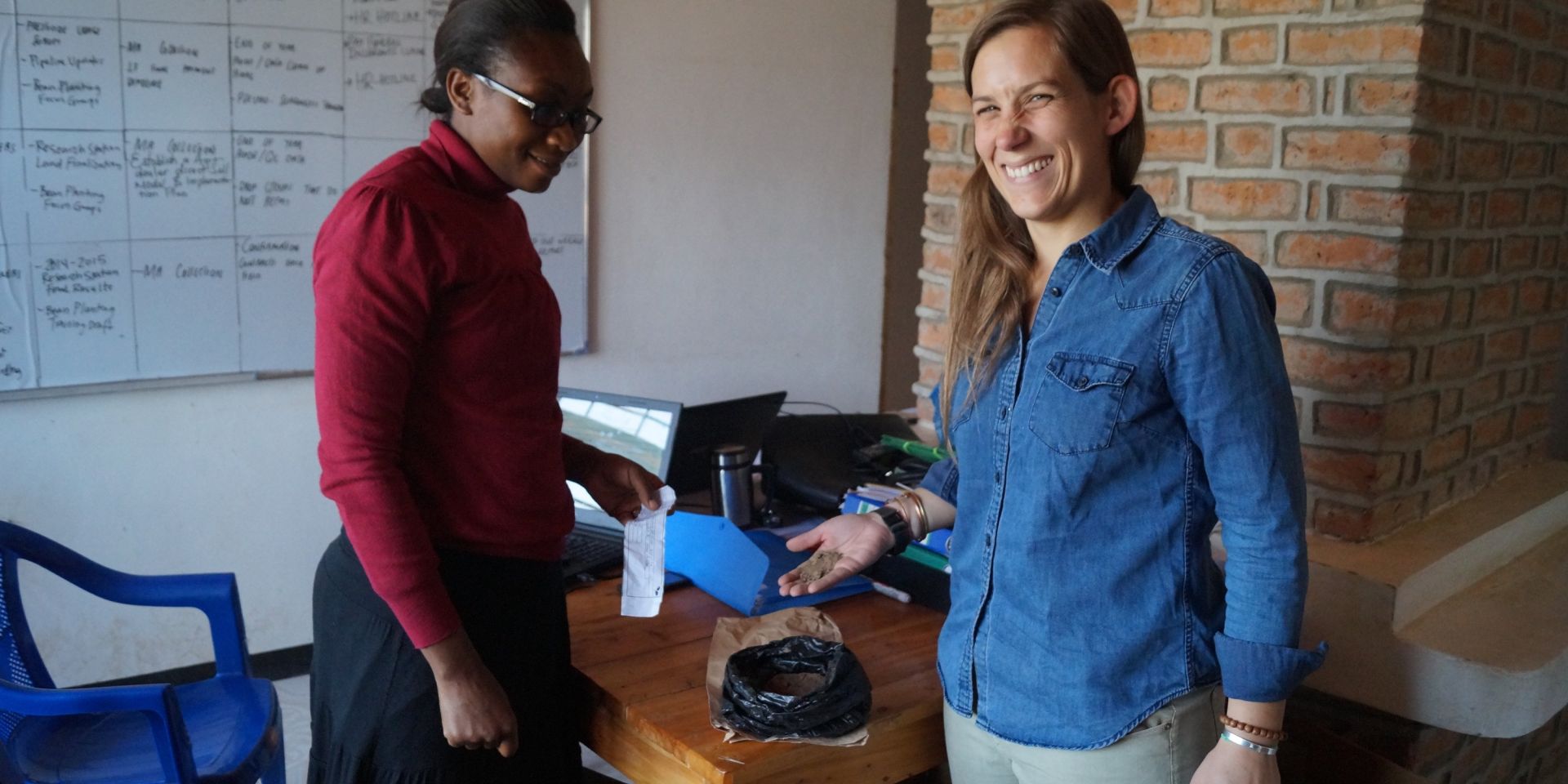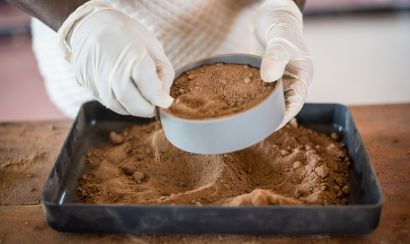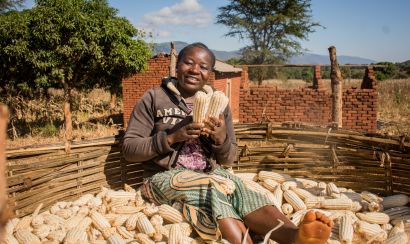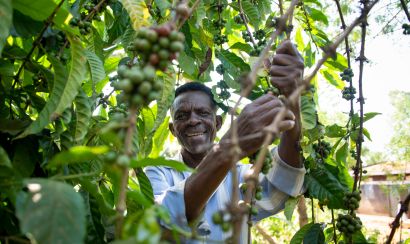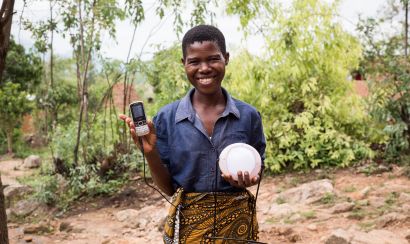Get The Dirt On Soil Testing in Tanzania
Soil Testing in Tanzania
One Acre Fund recognizes the importance of healthy soils, and that's why we’ve been investing in new activities to better understand our clients’ soil health needs. In each of our countries, One Acre Fund’s innovations teams have been working on processes for testing and analyzing soil.
Soil testing is the first step to understanding regional soil variability and ensuring long-term soil health. Currently, our innovations team in Tanzania is collecting and analyzing soil samples from farmers’ land in the sites where we work, as well as in sites in Iringa and Mbeya regions where we plan to expand in the future. What they learn will have important implications for our program.
After analyzing these soil samples, the team will use the results to inform the design of new agricultural trials to figure out which fertilizers will work best for farmers’ maize crops. After the fertilizer trials conclude in 2016, the team will compare the yields, and determine district-specific fertilizer recommendations to help farmers maximize their crop yields and protect long-term soil health.
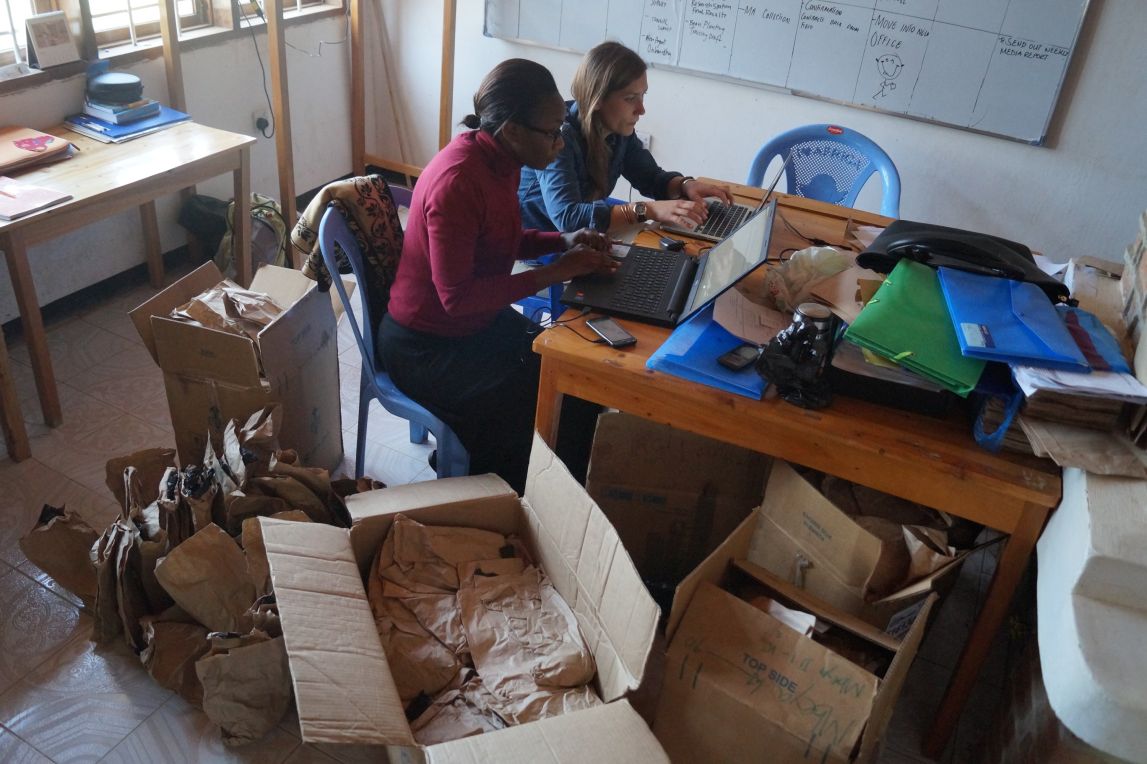
To get the dirt on soil testing, we asked Happiness Nnko, our Tanzania agronomist, and Emma Impink, our Tanzania monitoring and evaluation (M&E) and innovations manager, to explain the nuts and bolts of soil analysis, and report on how the project is going so far.
What exactly is soil analysis?
Happiness: Soil analysis is the process used to determine nutrient availability—both macro and micro nutrients—composition, and other characteristics such as the acidity or pH level. This helps to determine how much of each nutrient the soil will provide to any given crop, which will allow us to provide precise recommendations for fertilizer usage and how to maintain soil fertility.
What do you think the results of this soil analysis will show?
Happiness: Well, we expect two types of results related to soil health. If soil fertility is low, then we will teach farmers different techniques to improve their soil fertility. These include techniques like inter-cropping, fallow practices, and use of compost. We also offer recommendations on the quantity and timing of fertilizer application— many farmers do not realize that micro-dosing fertilizer, or applying it in very small quantities at the proper time, is key to ensuring soil health while producing strong yields.
But if the soil is in good health, then we teach farmers to maintain the soil fertility by applying the same techniques as mentioned in the above section.
How is soil analysis conducted?
Happiness: I want to warn you: this is going to be pretty technical! First, you have to determine the area that will be represented by the sample. Soil physical appearance, texture, color, slope, drainage and past management should be similar throughout the area. It sometimes is helpful to draw a map of the property and identify areas where we will collect samples.
Then, using a clean bucket, hoe and a cup, we collect samples to a depth of 20cm from random spots within the defined areas. These are called “sub-samples.” It’s important to avoid sampling field or plot edges— you want to make sure the sample you collect is representative of the soil in the area.
After you break up any lumps in the soil and remove all the stones, roots, and debris, you have to thoroughly mix sub-samples in the bucket. Once the sample is thoroughly mixed, you scoop out approximately one cup of soil and put it in a plastic bag. If soil is wet, we spread it on a clean sheet of paper to air-dry. Then we label each bag with the sample ID and complete the submission form.
The last step is to specify a Crop Code for each sample on the sample submission form we use. This will help provide the lime and nutrient recommendations. After the sample is labeled, it is sent to the laboratory for analysis.
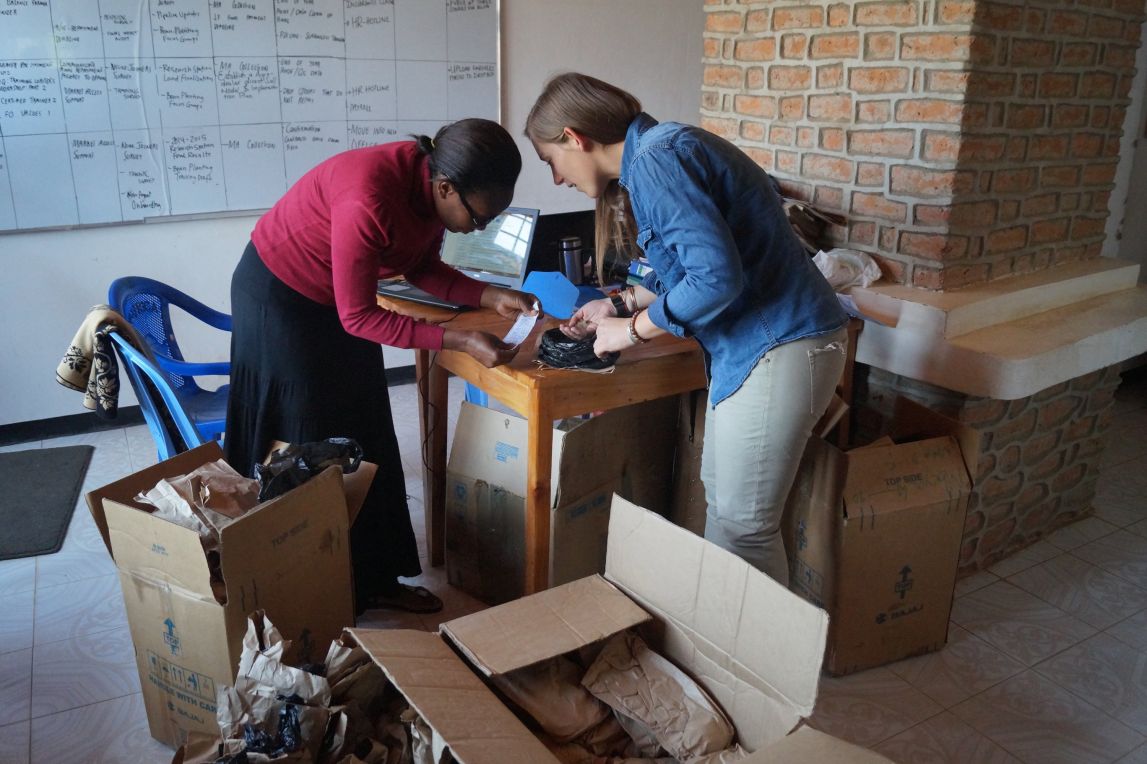
So what happens once the results are in?
Emma: We will use the results to design a farmer-level fertilizer trial. Farmers use different types of fertilizers in small test and control plots in their farms. This will help us to refine our fertilizer recommendations for maximum yields. We will also plan for long-term soil improvement and soil health management once we know which nutrients are depleted in our soils. And then finally, we will create new trainings and products that will restore and improve soil health.
Do you ever tell farmers you wouldn’t recommend they farm with One Acre Fund because they have bad soil?
Emma: Never. My hope is that we can develop systems—recommendations, products and trainings– that will help make any soil productive for the crops that a farmer wants to grow.
Amongst One Acre Fund farmers, are there different types of soils?
Emma: Absolutely! There are a lot of different soil types, all of which hold nutrients and water totally differently. Different types of soil may serve as optimal growing environments for certain crops and not for others. The presence or absence of different nutrients will affect crop growth in different ways. We need to make sure we are offering dynamic planting trainings that allow farmers to take advantage of the nutrients present in their land and the characteristics of their unique soil type.
Why soil is so important to farmers?
Emma: Soil is everything! Soil is our foundation, sustaining life and nourishing the crops that our farmers grow to support their families!
